I liked the last 5L Onkens for Mark Audio Pluvia 7.2HDs I built for a friend so much that I made a 2nd pair for me. Copper titanium cones in the drivers this time but the same "True Black" finish on 15mm Baltic birch. These guys are just great full range speakers in free space ~80Hz-22KHz; plus they are inexpensive, tiny for versatile application, and can fill a room. I also built an Elekit 8200R 8w amp for them especially (with an "integrated" delta sigma DAC). I tube rolled the power section and prefer Tung-Sol 6505s for dynamics and high frequency performance (over KT88s, 6L6GCs, and even Mullard EL34s) for these Onkens. I also built a standard bass ported subwoofer to get below the 80Hz down to 45Hz. I cycled through a number of subwoofer ideas but needed to go ported to keep the driver & cabinet somewhat small (~19L outside). Nice integration as to size and sound.



Last edited:
Heh heh. Gave the "real" ones to the friend who got the initial tiny Onkens. Happy Christmas all.Cute speaker stands :^)
Perhaps... I've added BDS loss correction to some other small Onkens, but I've typically left this configuration alone. While I measure initially in free space they'll likely find a home in 2 pi space and have improved bass response. Still, I don't really observe the expected 6dB "loss" below (1/8x13560 in/sec)/6in=283Hz in the SPL curve. As mentioned, I have seen it for certain other designs as below... that experience was exactly as predicted/calculated.Baffle step compensation circuit is mandatory for the curve #5,441. However, I hope they are just fine if pushed to the wall?
I don't understand exactly to the details how baffle step works by formulas, the only thing I know for sure it's 6 Db total, not per octave. It can stretch or compress. If you hit the wall reflection before the full 6 Db decline the baffle step loss could be lower than 6 Db.
Well, my experience is that, in free space, the baffle step occurs specifically at the frequency where wavelength is 8x the width of the baffle. Correction circuits are often designed with this specific "crossover" in mind. And, unfortunately, they attenuate the higher frequencies to compensate for the difference in acoustical load presented by the baffle to "lower frequencies," which are radiating in 4pi space, rather than 2pi space, as the "higher frequencies" do off the baffle. So, on my builds which have minimal baffles tight around the drivers I have a couple choices: add a larger baffle to reflect "lower frequencies" into 2pi space or use a BDS loss correction circuit. Again, in my Onkens referenced here, the baffle is wide enough that any issues occur below 283Hz, and the chamfered edge further smooths any observed "loss." While "loss" is undoubtedly present, I didn't feel the need to compensate, and I don't like simply "making heat" from the speaker level signal in a circuit, when I don't need to so do. 🙂I don't understand exactly to the details how baffle step works by formulas, the only thing I know for sure it's 6 Db total, not per octave. It can stretch or compress. If you hit the wall reflection before the full 6 Db decline the baffle step loss could be lower than 6 Db.
In reality, Its often only 2-3 dB needed in an average european livingroom if the speakers are not in the middle of the room.I don't understand exactly to the details how baffle step works by formulas, the only thing I know for sure it's 6 Db total, not per octave. It can stretch or compress. If you hit the wall reflection before the full 6 Db decline the baffle step loss could be lower than 6 Db.
Streamers like WiiM ultra have peq function with shelving, very useful to get the baffle step correction right.
I often have much more than 6dB or more variance from "house curve" on a speaker in free space. I personally think PEQ and FIR filters & signal processing is fine to correct room effects... plus, I've not yet heard a perfect full range system. I even modeled correction for some BDS loss using DSP in a miniDSP2x4HD before "soldering down" a circuit with similar attenuation attributes. Still I say, my SPL curve doesn't imply such correction is needed.In reality, Its often only 2-3 dB needed in an average european livingroom if the speakers are not in the middle of the room.
Streamers like WiiM ultra have peq function with shelving, very useful to get the baffle step correction right.
My 2.1 NanoKit was updated to "real" stands (in all-steel with, preferred, small platforms, modded with foam "feet," cable mgmt, and custom rear anchoring) for working in free space in varying environments. The mMar-Ken7p cabinets via my build for the Mark Audio Pluvia 7.2HDs are just such good full range speakers, and great in free space, when driven by just 8 watts of tube warmth to 90dB and secured tightly in stands. Thanks. The added thump from my NanoSub (lower left) helps. I think I can even "go mobile" with this kit and throw listening sessions in the backcountry wtih a tiny projector and screen setup ~ or skip the video and just crush the tunes; my best "nano" source has been my Onkyo X1... "I'm just an exciteable boy."Cute speaker stands :^)
Old pictures of my Zu Audio Druid (101db full-range speakers) upgraded with two Zu kits.
After many years of using stock Zu Audio Druid purchased in Finland I decided to proceed with 2 stages of upgrade kits provided directly by Zu from the USA.
The first stage was a new Zu audio drivers pack and it was easy to replace, but the second stage upgrade kit required some DIY technique and this process was documented on my images from 2017 when internal damping of the cabinet was upgraded, old cheap super tweeter and it's metal lens was replaced with brand new and more expensive Radian 850 with bigger metal lens and new high-pass filter network provided by Sean from Zu Audio. I was happy about the upgrade.
Those pics taken during the upgrade and after the upgrade in 2017-2018, my analog system was significantly upgraded later on, but it's a good memories i'd like to share with full-range fan boys here.
After many years of using stock Zu Audio Druid purchased in Finland I decided to proceed with 2 stages of upgrade kits provided directly by Zu from the USA.
The first stage was a new Zu audio drivers pack and it was easy to replace, but the second stage upgrade kit required some DIY technique and this process was documented on my images from 2017 when internal damping of the cabinet was upgraded, old cheap super tweeter and it's metal lens was replaced with brand new and more expensive Radian 850 with bigger metal lens and new high-pass filter network provided by Sean from Zu Audio. I was happy about the upgrade.
Those pics taken during the upgrade and after the upgrade in 2017-2018, my analog system was significantly upgraded later on, but it's a good memories i'd like to share with full-range fan boys here.
Attachments
-
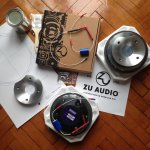 083.JPG583.5 KB · Views: 114
083.JPG583.5 KB · Views: 114 -
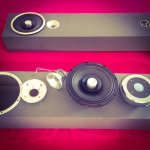 101.JPG356.4 KB · Views: 116
101.JPG356.4 KB · Views: 116 -
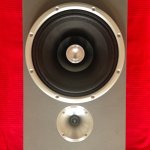 103.JPG434.9 KB · Views: 109
103.JPG434.9 KB · Views: 109 -
 104.JPG349.3 KB · Views: 106
104.JPG349.3 KB · Views: 106 -
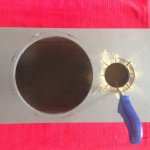 106.JPG689.9 KB · Views: 117
106.JPG689.9 KB · Views: 117 -
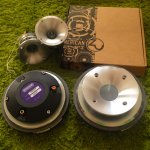 109.JPG588.5 KB · Views: 115
109.JPG588.5 KB · Views: 115 -
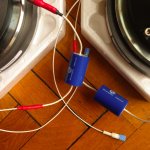 113.JPG544.2 KB · Views: 106
113.JPG544.2 KB · Views: 106 -
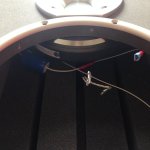 114.JPG464.3 KB · Views: 108
114.JPG464.3 KB · Views: 108 -
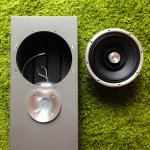 115.JPG744.1 KB · Views: 116
115.JPG744.1 KB · Views: 116 -
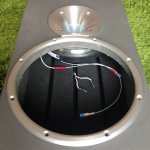 124.JPG483.2 KB · Views: 104
124.JPG483.2 KB · Views: 104 -
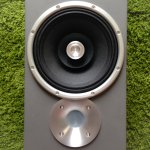 116.JPG628.2 KB · Views: 105
116.JPG628.2 KB · Views: 105 -
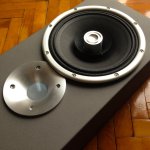 118.jpg574.8 KB · Views: 104
118.jpg574.8 KB · Views: 104 -
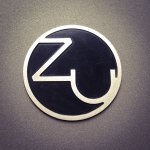 119.JPG933 KB · Views: 101
119.JPG933 KB · Views: 101 -
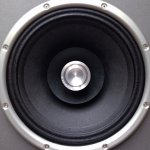 120.JPG534.3 KB · Views: 107
120.JPG534.3 KB · Views: 107 -
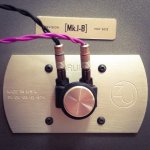 123.JPG550.5 KB · Views: 126
123.JPG550.5 KB · Views: 126 -
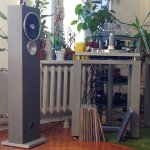 622.JPG502.3 KB · Views: 126
622.JPG502.3 KB · Views: 126
some kind of exotic fullrange omni. Works great in the mids.
Listening to Bulat Okudschawa or Keith Jarret Koeln Concert is great.
Listening to Bulat Okudschawa or Keith Jarret Koeln Concert is great.
fun loudspeaker in 18 liter water bottle
with heavy eq
diy double cone after removing dustcap
works astonishingly well. like other thin wall speakers




with heavy eq
diy double cone after removing dustcap
works astonishingly well. like other thin wall speakers
I hereby relinquish my Ugliest Prize! Suggest flipping over omni top, short-legs backwave bass loading below. (Have three ~23L waterjugs saved from Covid days....)
Let me try to win Ugliest Prize (though far from my cheapest). The sound of the 6x10 DEW-alnico fullrange is kind of like eating creme brulee -- buttery rich crispy textured. When I picked up a pair early 2022 (one of my first forays into bargain vintage alnico) I was so taken by the sweet-not-sour sound I then "fished" four additional drivers. While I had some success combining OB-U (openback shallow box) with side-firing inductor-BSC, even with a third driver I couldn't reach bass much below ~70hz. Tried bi-amping with a 6x9 auto speaker but the sensitivity gap was ~11dB. Finally, last...
Last edited:
Wow, Bulat Okudzhava, where did you find these?
I had an old LP with him performing his songs, including Belorussian Station (Белорусский вокзал) but lost it in successive house moves over the years.
Sad!
https://en.wikipedia.org/wiki/Bulat_Okudzhava
I had an old LP with him performing his songs, including Belorussian Station (Белорусский вокзал) but lost it in successive house moves over the years.
Sad!
https://en.wikipedia.org/wiki/Bulat_Okudzhava
Last edited by a moderator:
bought this LP in the nineties - such a great music!

its this music
its this music
Do you understand what he is saying? 👍bought this LP in the nineties - such a great music!
And what he was trying to convey!not a word - but the melody of his voice is celestial!
He was heard!
Well, I took some more measurements in 4pi space and decided some BDS correction, and room correction, might be in order for the NanoOnkens. I know the circuit but find that working, and especially experimenting, in the digital domain is easier and more flexible. I installed a miniDSP 2x4HD and built some PEQ filter sets both manually and automatically in REW (from analysis of the "raw" SPL sweep). Purists will turn over but I find DSP a fine solution ~ for me the sound of music is the ultimate test. The resulting corrected sweep is substantially improved (I think it was my 5th pass) and so is the sound. And yeah, that's a Bluetooth/aptX HD receiver for dropping in wireless audio sources to the kit. Even with the 2x4HD the whole thing remains very nano/small.@dcoffin Baffle step compensation circuit is mandatory for the curve #5,441. However, I hope they are just fine if pushed to the wall?
- Home
- Loudspeakers
- Full Range
- Full Range Speaker Photo Gallery

